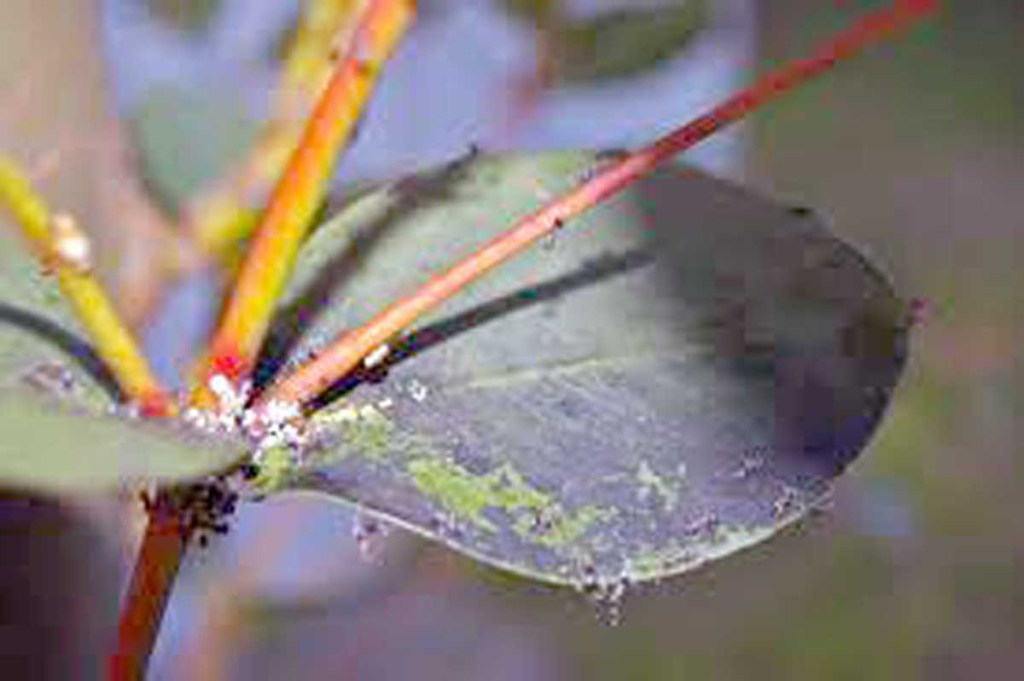Your Extension corner
Published 9:39 am Thursday, May 22, 2014

- Mold
Question: Last summer my azaleas, gardenias and even my car were completely covered in a black growth. Later I noticed that the crape myrtle that is in the same bed and near the car was covered in the same stuff. Is there anything that I can do this year do prevent this from happening?
Trending
Answer: This time of the year is the perfect time to start thinking about issues that you may have encountered last year. As the old saying goes, “an ounce of prevention is worth a pound of cure.” This is certainly the case with many problems that can arise in the garden. As for the blackness that affected your ornamentals last growing season, the issue is slightly larger. To solve this issue, we must look into the problem behind the problem, and then we might get to the source.
That black growth that ailed your garden and helped make your local carwash rich is a common issue called “sooty mold.” Sooty mold is a fungal growth that grows on a sugary substance known as honeydew. Honeydew is the nutrient-rich excrement from one of many insects that we call “sap suckers.” A sap-sucking insect feeds on the sap which is contained in the phloem tissues in a plant’s stems and leaves. Aphids, mealybugs, psyllids, whiteflies and soft scale insects are some of the common sap-sucking insects that cause problems on plants. As these insects feed on the sap, much of the nutrient rich substance quickly travels through the digestive tract of the insect and lands as the sweet and sticky liquid known as honeydew.
Sooty mold is a specialized fungus that lives and thrives on surfaces coated with honeydew. While sooty mold is not a plant parasitic organism, it can indirectly cause a few problems. The sooty mold can become so thick on leaves that it can inhibit photosynthesis, potentially leading to early leaf drop. While this is aesthetically unpleasing, the true problem is the insects that cause all of this.
Before you decide to initiate an all-out chemical war on these micro-nutrient marauders, consider a few options that can be effective control methods. Check leaves and other surfaces periodically for a clear, shiny and sticky substance. If you find any honeydew, start looking for the source of it; typically a tree that is located nearby. Plants that are located beneath hickories, hackberries, maples, gardenias or crape myrtles seem to be at a higher risk of being coated with sooty mold. Once the source is found, there are few things to consider. First – how large is your tree? A small-trunked, 10’ to 15’ tree will be a much better candidate for treatment than the 70’ pecan tree in your neighbor’s yard. Next, how severe is the need for treatment? If the seasonal hardships incurred are no more than a few weeks of sticky and black plants, then consider letting the feeding frenzy continue. A plant’s tolerance level of such pests are often much higher than those of a persnickety gardener. If the sooty mold problem is more than one can bear, then there are a few methods that are quick, easy, and quite inexpensive.
A strong stream of water blasting from a water hose can often be the solution to the problem. A well-directed stream of water can dislodge many sap-sucking insects from their food source. Once on the ground, the insects will not be able to return up the plant and the problem may be solved. If this doesn’t seem to work, products such as insecticidal soaps and horticultural oils, both of which are readily available at most garden shops, can provide effective control. If sooty mold and sap-sucking insects seem to occur year after year in the same areas, consider using a systemic insecticide, many of which can provide season long control. The problem with these products is that they can take two to four weeks to become effective, so they are better used as a preventative rather than a curative solution. Secondly, the effectiveness of these products can often be directly correlated with the size of the plant. If used correctly, systemic insecticides can be very effective on small trees and shrubs; however, that control decreases as tree size increases. When using any chemical product, ALWAYS READ THE LABEL for directions for use and correct rates. As for removing the sooty mold, it will slowly weather away with rain. As with the sap-sucking insects, a water hose can be quite effective in achieving this.
For more information on this or other horticulture related topics, please contact Hunter McBrayer, Plant Diagnostic Lab Technician, of the Alabama Cooperative Extension System, C. Beaty Hanna Horticulture & Environmental Center, which is based at the Birmingham Botanical Gardens. This column includes research-based information from land-grant universities around the country, including Alabama A&M University and Auburn University. Email questions to Hunter at rhm0015@auburn.edu or call 205 879-6964 x19. Learn more about what is going on at the St. Clair County Extension office by visiting the ACES website, www.aces.edu/StClair, or like us on Facebook.



